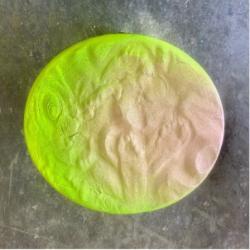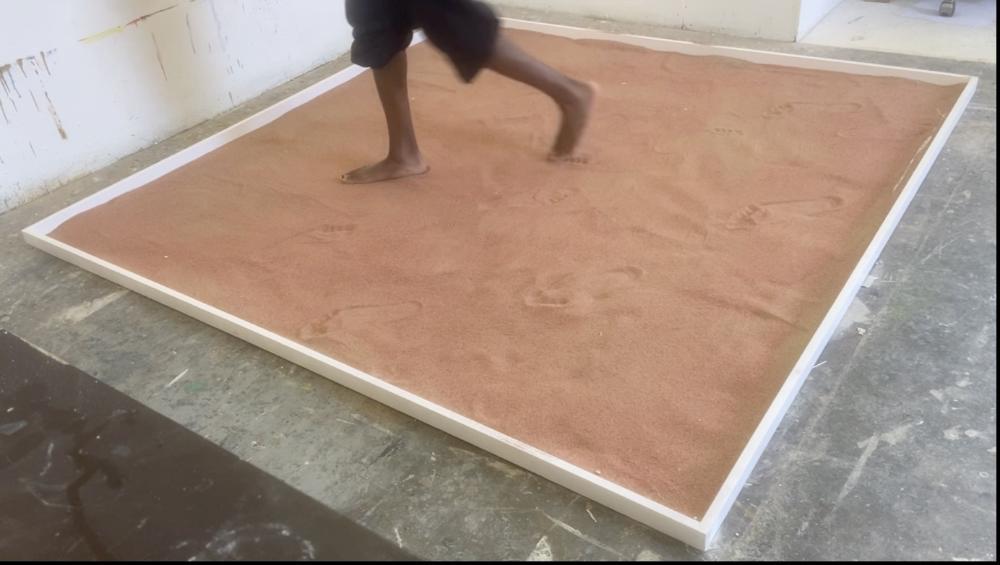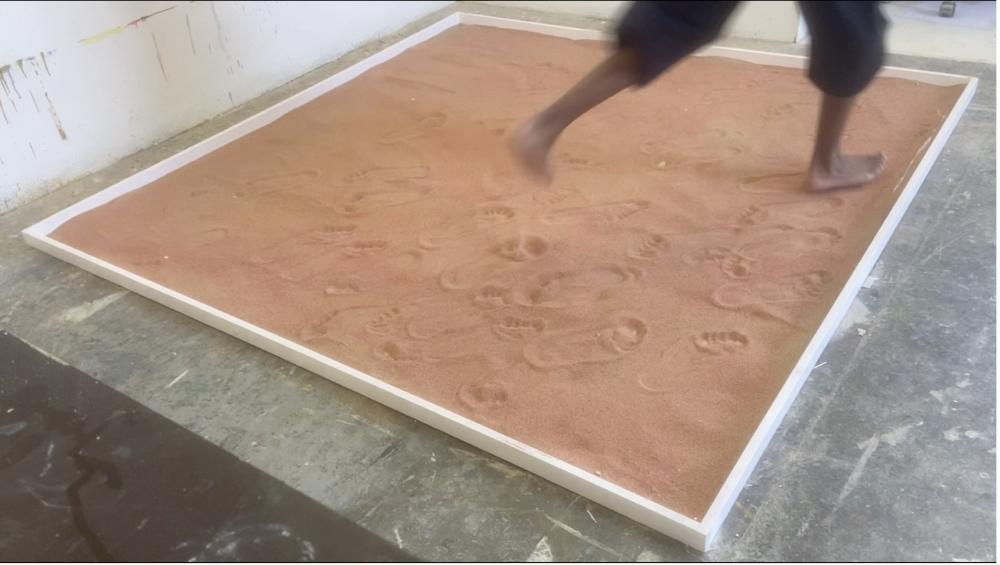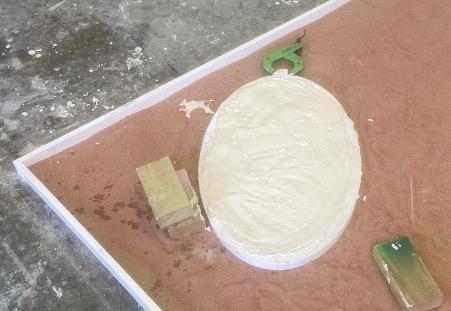25 Sep 2024
This blog was written by Kumbirai Makumbe, an artist and Lecturer at London College of Contemporary Arts, and a PgCert student from the 2023/2024 cohort, as part of the Higher Education in Practice: Personal reflections on your discipline and the wider context of higher education submission.
/prod01/channel_13/uca-creative-education/media/research-and-enterprise/nikolai/Kumbirai-1-604X376.jpg)
The themes that run through both my artistic and pedagogical practices both revolve around decolonisation. This includes addressing the lack of representation and belonging of black and queer folks both in & out of higher educational institutions as well as the placement of time and energy into various decolonial endeavours such as taking up space, resisting othering and archiving.
These parallels are most clearly illustrated by my creative response which is a sculptural work titled Sometimes running away is walking away but faster.

Fig 1 Sometimes running away is walking away but faster. 71 x 41 x 2.5cm. Plaster, sand and acrylic. (Makumbe, 2024).
My artistic practice operates as a tribute to those who came before me, a testament to my own present existence and as documentation for those that come after me. I liken my positionality to both an anatopism and an anachronism. Existing in the wrong place or in spaces that defy conventional categorization whilst navigating this specific space-time with a history that has been obscured or erased. Through my artistic practice, I perpetually attempt to articulate this complex narrative through messily bridging the past, present, and future and filling in the gaps however I see fit when they’re encountered.
Sometimes running away is walking away but faster stems specifically from the inability to locate queer Zimbabweans historically which has fuelled the delegitimization of them. In line with this, the act of archiving and documentation can be seen as an active counteraction in opposition to historical erasure.
My creative response entailed of fictionalising and documenting the presence of queer Zimbabweans, through performatively producing footsteps in a bound pit of sand, followed by archiving them through plaster casting them in a loosely archaeological manner. This process is shown in figures 2,3,4 and 5.

Fig 2 Production documentation. (Makumbe, 2024)

Fig 3 Production Documentation. (Makumbe, 2024)

Fig 4 Production Documentation. (Makumbe, 2024)

Fig 5 Production Documentation. (Makumbe, 2024)
Parallel to this, in my teaching practice, I place considerable effort into creating a sense of belonging for my students. One way I do this is through representation by including and presenting diverse perspectives.
I actively try to oppose the dominant discourse of the ‘normal student’ in UK higher education institutions within my teaching practice. Read states that “even in institutions that have a high proportion of ‘non-traditional’ students, the culture of the academy itself still in many ways reflects the dominant discourse of the student as young, white, middle-class and male” (Read et al., 2003). My opposition of this conceptualisation of the ‘normal’ student takes shape in the form of representation. Not simply through presence, despite Read stating that her research into belonging did include students stating that “the existence of a substantial proportion of students ‘like them’ did indeed give them a greater sense of ‘belonging’” (Read et al., 2003), but through the production of a curriculum that doesn’t reinforce the previously stated conceptualisation of the ‘normal’ student but a curriculum that reflects a wider group of people from different background. One that may hopefully reflect them.
An example of me doing so is that I always place emphasis on including references and resources from diverse voices and perspectives. As shown in Figures 6 and 7 illustrate this by displaying screenshots of the VLE for my Level 4 Computer Aided Design class on a BA Fashion course where I include a diverse range of designers. This isn’t exhaustive however Aisha Richards and Terry Finnegan state it to be important to encourage staff “within their own teaching context to create small changes” when suggesting key steps to help ensure equality and diversity are embedded in arts and design curricula.
Belonging’s importance can be highlighted through its relationship to retention. OFS’s investigation (Office for Students, 2020) into the 22.1 per cent BAME attainment gap in 2020 led to the conclusion that belonging was a major factor in the lower retention rates, Akinbode (2002) states that ““differential outcomes are not rooted in academic ability, since all students must demonstrate their academic capability to gain a place at university... One aspect which has been linked to differentials in attainment via research, is a sense of belonging”.

Fig 6 Screenshot of Level 4 Computer-Aided Design class materials on Padlet (Makumbe, 2024)

Fig 7 Screenshot of Level 5 Computer-Aided Design class materials on Padlet. (Makumbe, 2024)
To put it artistically, I place efforts into ensuring that my students do not feel like an anatopism as “to centre otherness is to accept that no single voice speaks for us all” (Dennis, 2018). Dennis states, when discussing decolonising curricular endeavours, that “a decolonising pedagogy centred on multiplicity is one that accepts the cacophony of voices”.
I think the overarching theme of decoloniality, that runs though both my artistic and pedagogical practices, can be expanded upon through the acknowledgement of the ethos of active inclusion that sits alongside it. With me being relatively at the beginning of my teaching practice, I’ve found my artistic practice to heavily inform it and transform it into what bell hooks describes as a radical pedagogy. This is one that factors in difference and with hooks stating that it’s a pedagogy with “a recognition of differences—those determined by class, race, sexual practice, nationality, and so on” (hooks, 1994).
Figures:
- Makumbe, K. (2024) Sometimes running away is walking away but faster. [Photograph]
- Makumbe, K. (2024) Production documentation [Photograph]
- Makumbe, K. (2024) Production documentation [Photograph]
- Makumbe, K. (2024) Production documentation [Photograph]
- Makumbe, K. (2024) Production documentation [Photograph]
- Makumbe, K. (2024) Screenshot of Level 4 Computer-Aided Design class materials on Padlet [Photograph]
- Makumbe, K. (2024) Screenshot of Level 5 Computer-Aided Design class materials on Padlet [Photograph]
Bibliography:
- Akinbode, H.O. (2022) A sense of belonging – what it means for higher education institutions, Behavioural Insights in Higher Education. Available at: https://blogs.kcl.ac.uk/behaviouralinsights/2022/01/12/a-sense-of-belonging-what-it-means-for-higher-education-institutions/ (Accessed: 28 May 2024).
- Dennis, C.A. (2018) ‘Decolonising Education: A Pedagogic Intervention’, in Decolonising the University. London, Greater London: Pluto Press, pp. 190–207.
- hooks, bell (1994) ‘Introduction’, in Teaching to transgress: Education as the practice of freedom. New York, New York: Routledge, pp. 1–12.
- Office for students, (2020), ‘Degree attainment: Black Asian and minority ethnic students’. Available at: https://www.officeforstudents.org.uk/advice-and-guidance/promoting-equal-opportunities/effective-practice/black-asian-and-minority-ethnic-students/
- Read, B., Archer, L. and Leathwood, C. (2003) ‘Challenging cultures? student conceptions of “belonging” and “isolation” at a post-1992 University’, Studies in Higher Education, 28(3), pp. 261–277. doi:10.1080/03075070309290.
- Richards, A. and Finnegan, T. (2015) Embedding equality and diversity in the curriculum: an art and design practitioner’s guide [Preprint]. Available at: https://s3.eu-west-2.amazonaws.com/assets.creode.advancehe-document-manager/documents/hea/private/resources/eedc_art_and_design_online_1568037256.pdf (Accessed: 2024).